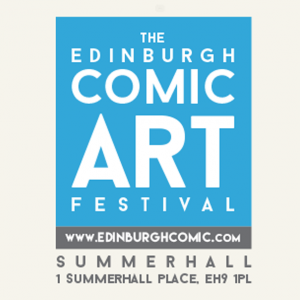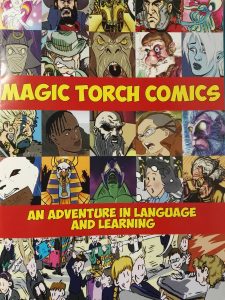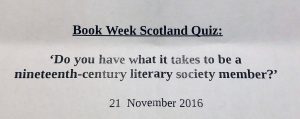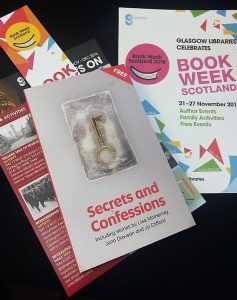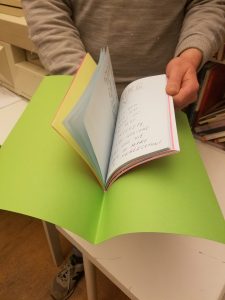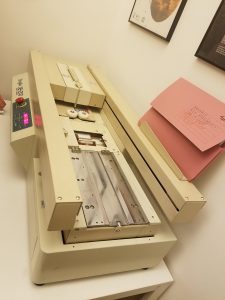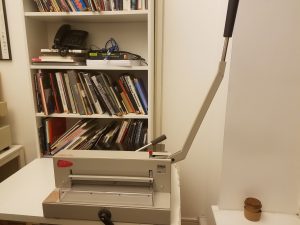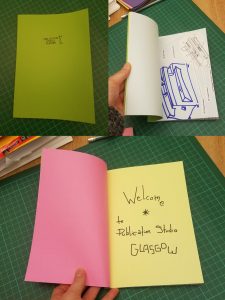The Edinburgh Comic Art Festival (ECAF), organised by BHP comics, was held at The Out of the Blue Drill Hall in 02 December. ECAF was full of exhibiting authors and artists, plenty of workshops, talks and events for comic book fans of all ages. In the festival, 40 illustrators, independent comic publishers, exhibiting artists and writers were involved.
 It is easy to walk the whole field. I was attracted by some amazing paintings and attractive graphic novels. Most of comics were self-published, the illustrators displayed their work on the comic market. Some comic online advertised the web though printed comic. The special comic artist who impressed me was MJ Wallace. The comics she created showed different styles. And she designed her cards in 5 different illustrations. The card itself is creative thing. The comic artist Steven Ingram introduced me his series Left. He has been putting comics on the web for years, but comic was not the only way for him to get income. He also worked as a graphic designer.
It is easy to walk the whole field. I was attracted by some amazing paintings and attractive graphic novels. Most of comics were self-published, the illustrators displayed their work on the comic market. Some comic online advertised the web though printed comic. The special comic artist who impressed me was MJ Wallace. The comics she created showed different styles. And she designed her cards in 5 different illustrations. The card itself is creative thing. The comic artist Steven Ingram introduced me his series Left. He has been putting comics on the web for years, but comic was not the only way for him to get income. He also worked as a graphic designer.
There were 1 exhibition, 5 workshops and 5 presentations in the whole day. On the presentation “BOAT: Indy Film to Indy Comic”, the short film was played. After the short film, the creators of the Boat graphic novel series talked about the progress from the film to the comic books. They talked about how they put the film into comic type, then they chose the self-publishing way to publish the comic books. The series won SICBA awards continuously. ECAF also invited the Rachael Stott – the Best Newcomer at the British Comics Awards in 2015.Rachel Stott discussed her work on books such as Doctor Who (published by Titan Comics) with BHP publisher Sha Nazir. Unfortunately, I didn’t get a ticket for Rachael Stott’s talk so I didn’t have the chance to join it.
This is my first time joining a comic event in UK. When I talked to the man who introduced me the Capital Sci-Fi Con, he suggested me to explore more comic events in UK. He said that the comic events here were more focus on different type fans. Compared with the Asia comic events, there were more chances for different fans community to set their own events but the scales were not large.
Chenchen Li

